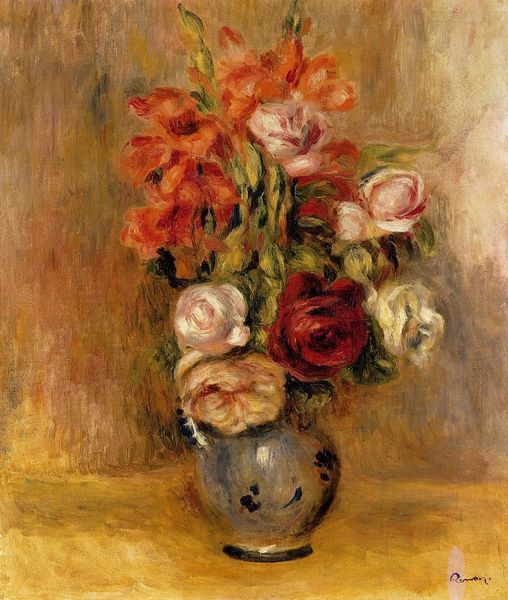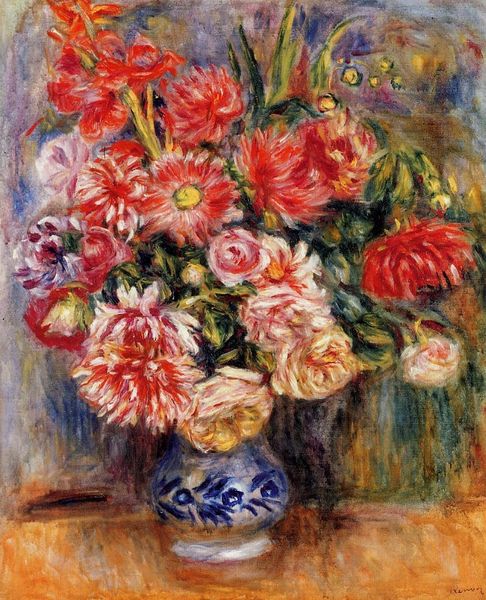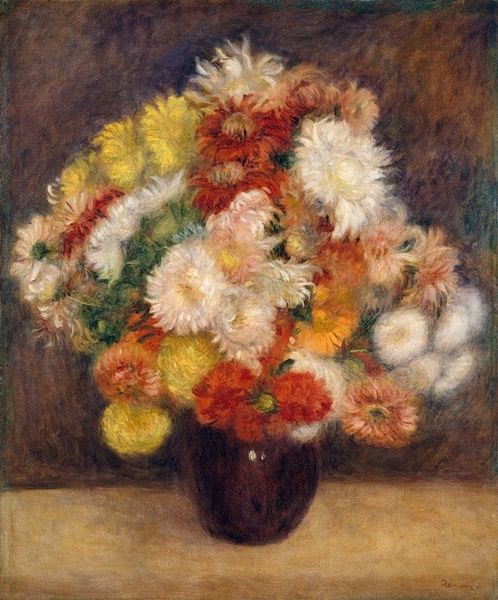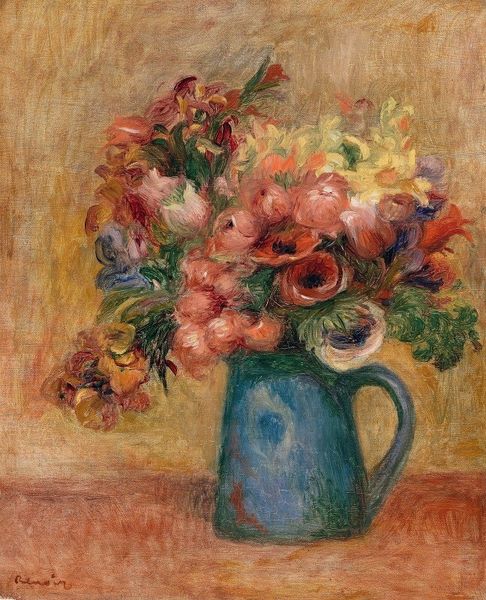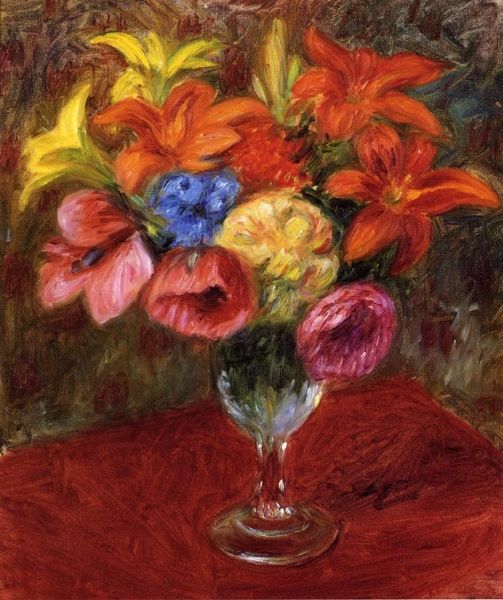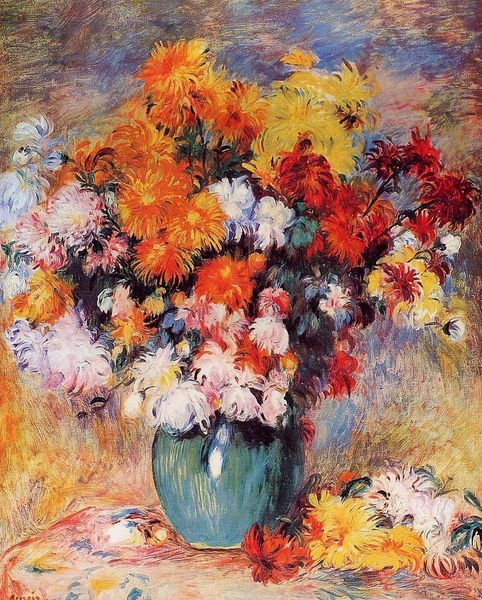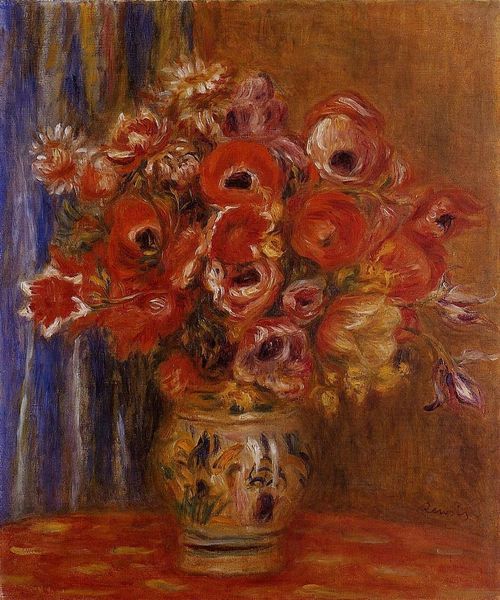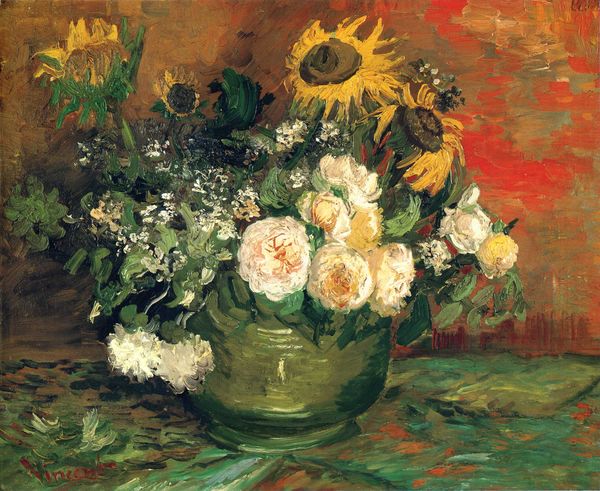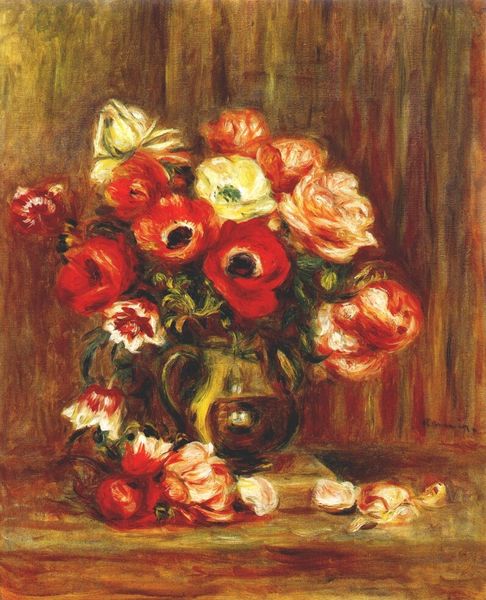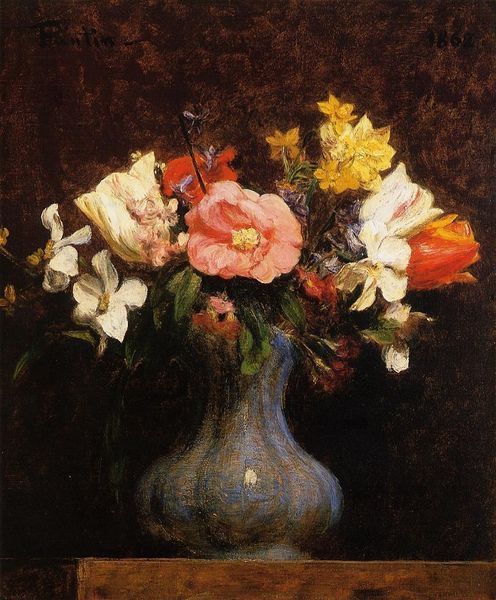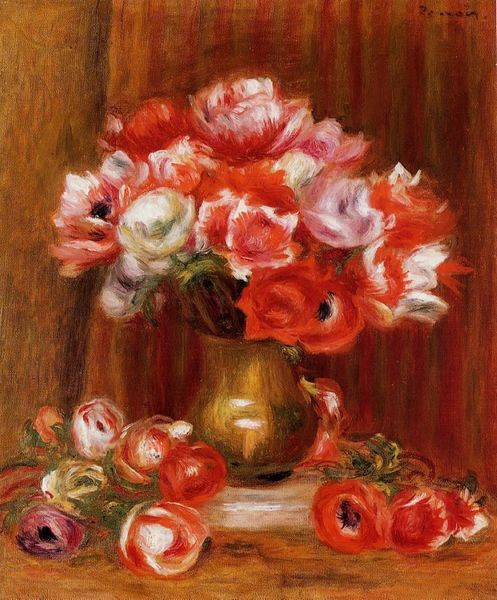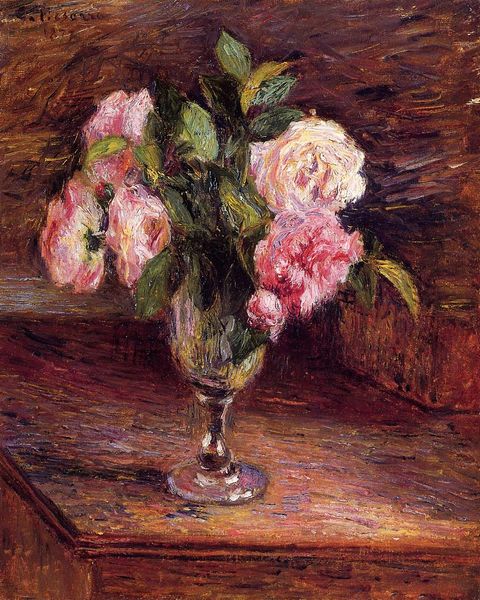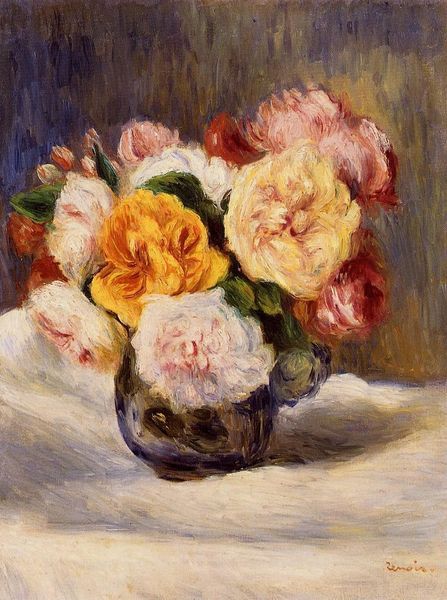
Copyright: Public domain
Curator: Looking at this artwork, the profusion of color and the almost tactile brushstrokes really jump out at you. Editor: It certainly has a cheerful, domestic feel. It's the kind of piece that might make one feel more hopeful, and brighten a room. Curator: Absolutely. What we have here is William Glackens' "Flowers in a Quimper Pitcher," painted around 1930. Glackens was deeply influenced by the Impressionists, particularly Renoir, and you can really see that influence in his use of light and color. He brings the post-impressionism closer to the domestic sphere, but also engages with its wider art world. Editor: It's lovely! The loose brushwork gives the painting a sense of movement and spontaneity. And it looks like Glackens employs the impasto technique, where the oil paint is thickly applied to the canvas, giving the painting texture. What can you tell me about this Quimper style pitcher? Curator: Quimper pottery hails from France and typically features folk art motifs. In the early 20th century, France underwent significant societal shifts; rapid industrialization led to rural-to-urban migration, altering traditional ways of life. Against this backdrop, we can appreciate a renewed interest in folk traditions and crafts. We also know that Glackens frequently traveled to France during this period. It would be interesting to trace how it appeared across Glackens other work and in connection to other rising social themes, which were explored within similar visual registers. Editor: That makes the floral decoration of the pitcher take on a more weighted context within the scene. I find myself thinking about how Glackens' background working as an illustrator and photojournalist probably gave him a knack for quickly capturing everyday moments in his work. I'm still fixated on the color scheme; its harmony speaks of a peaceful, contemplative moment. It makes me wonder what message or experience was Glackens trying to send or convey, through this painting's intentional curation and setup. Curator: His art provides an opportunity to question the role artists play in constructing the dominant visual cultures and understandings of our world, during rapidly changing global environments. Editor: I completely agree, it does create space for introspection around these historical processes, particularly from a modern, twenty-first century perspective.
Comments
No comments
Be the first to comment and join the conversation on the ultimate creative platform.
